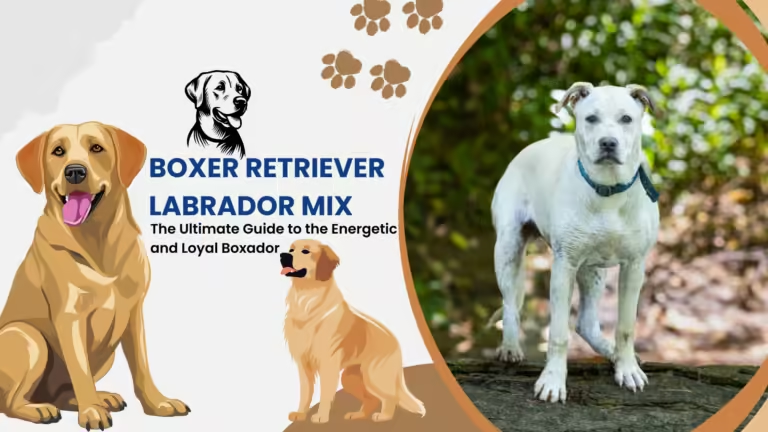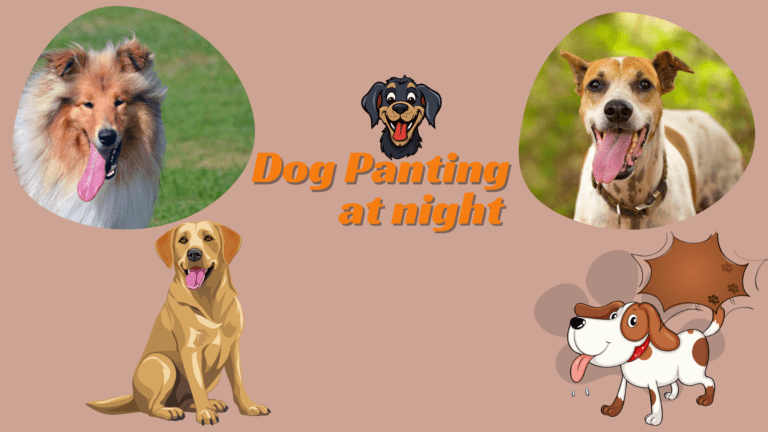10 Dog Care Tips Every New Dog Owner Needs to Follow
Getting a new dog into one’s life is quite an adventure. This is big responsibility, though. Proper care and attention are paramount in ensuring your furry companion will be healthy, happy, and well. For first-time dog owners, the tasks that come along with responsible pet care tend to make them overwhelmed, whereas this is quite an easy thing to do once good guidance is provided.
The key points of basic things are provided to guide excitement and challenges experienced in changing a daily routine in securing the house environment. These therefore include some of the most important things required by a new dog. By following suggestions that will be provided, new animal parents will be able to build a very good foundation for a long, endurable relationship between the pet and its owner.
Establish a Routine
Setting up a regular routine plays a key role in helping a new dog settle into their new home and stay healthy. A day-to-day plan that doesn’t change much has a big effect on a dog’s body and mind making them feel safe and steady [1].
Routine Importance
A set schedule helps dogs know what’s coming, which cuts down on stress and leads to better behavior. It has a positive impact on many parts of a dog’s life such as house training, grooming, and avoiding behavior problems [2]. For puppies, a schedule is key to get used to their new home and to learn crucial habits like potty training [1].
Feeding Schedule
Setting up a feeding routine plays a key role in a dog’s daily life. Two meals a day, with a gap of 8-12 hours, work well for most grown dogs [3]. If you feed breakfast at 7 AM, aim to give dinner around 7 PM [3]. Pups under five months might need to eat three times daily [3]. Sticking to a regular feeding plan helps to keep digestion healthy, weight in check, and energy levels steady [3].
Exercise Plan
Regular exercise plays an essential role in keeping a dog healthy, both and . How much and what kind of exercise a dog needs changes based on its age, breed, and health [1]. Some dogs might be happy with 30 minutes of activity each day, while others could need up to two hours [1]. Exercise helps to prevent obesity and gives dogs a way to use their energy and keep their minds active [4]. For puppies, keep in mind that several short play sessions work better than long walks or hard exercise to protect their growing joints [1].
Provide Proper Nutrition
The better the food, especially for those in need of special diets because of weight or breed characteristicls like retrievers rehoming a golden make sure he receives adequate nutrition. Providing your pet with a well-balanced diet provide them everything they require in order to grow, have abundant of energy and maintain their body in good condition. There are several things to keep in mind when choosing a food for your new furry friend, all of which can help you make sure that your dog is eating the best nutritional foods.
Picking the Best Food
Picking the right dog food plays a key role in keeping dogs healthy. Dog owners should check for foods with real easy-to-spot whole-food items [5]. The Association of American Feed Control Officials (AAFCO) sets rules for pet food makers to ensure dog foods meet nutrition standards [6]. When buying food, look for the AAFCO nutrition statement on the package. This shows that the food meets set nutrition levels [6].
Portion Control
Keeping a dog at a healthy weight depends on good portion control. How much a dog should eat varies based on things like age, weight how active they are, and how fast their body uses energy [7]. Most grown-up dogs need to eat twice a day, while puppies might need three to six meals [8]. To figure out the right amount to feed, look at the feeding guide on the dog food package and think about what your dog needs [7].
Dietary Restrictions
Some canines have dietary needs or restrictions. An example of this is food allergic canines that need specialized diets [9]. These animals will need a veterinarian’s interest in formulating them a correct nutrition program. Other dogs benefit from diet programs prepared to maintain weight and to manage diseases of the kidney and other organs [5].
The condition can be reversed once proper nutrition is provided by the new owner, and the dogs can live a healthy, happy life. Keep in mind that a veterinarian should always be consulted for more detailed personalized advice.
Prioritize Regular Veterinary Care
By investing in regular veterinary care, you can prevent health issues and be sure that your animal is healthy. A new dog owner will be capable of providing healthy and happy lives to his pets by making an investment in keeping routine checks and taking precautions whenever necessary.
Vaccination Schedule
Vaccinations safeguard dogs from infectious diseases. Core vaccinations – that is, distemper, adenovirus, parvovirus, and rabies – are recommended for all dogs [10]. Non-core vaccinations depend on the animal’s geographical location, lifestyle, and other individual risk factors targeting the animal [10]. Generally, puppies require initial multiple vaccinations up to one year of age and adults require regular boosters [11]. A veterinarian should, however, be consulted because the vaccination recommendations can vary from dog to dog.
Annual Check-ups
Annual wellness exams give insights into a dog’s health changes. In annual visits, veterinarians conduct physical examinations, conduct blood tests, and investigate health concerns [12]. These check-ups allow for early detection of issues such as diabetes, thyroid disorders, and kidney problems [12]. By regular visitation, the owner gets to question any particular concerns with their veterinarian and discuss those issues [12].
Preventive Care
Preventative care encompasses many ways of caring for the health of a dog. Regular parasite prevention, dental care, and routine health screenings are some of the ways preventative care for dogs is managed [13]. The testing for heartworms is very key; the quicker this disease is caught, the better prognosis the dog will have [12]. This will also be cost-effective for the pets’ masters on long bases, as the emergencies are now less frequent, and the health problems are nipped well in advance before they get worse [12].
Regular investment in veterinary care means getting new dogs and assuring them of attention and treatment from start to finish.
Invest in Training and Socialization
Training and socialization are key elements in the responsible ownership of dogs. The two things work together to help owners create a well-behaved, confident, happy canine companion. New dog owners should immediately work on establishing basic obedience, using positive reinforcement, and making sure ample time is provided for socialization.
Basic Obedience Commands
Teaching the basic obedience commands is the most basic element of a dog’s training, which is rather imperative in bringing about a decently balanced and relaxed home. A few commands that really stand out from the rest include the sit command, the stay command, the down command, the off command, the watch command, the come command, the heel command, and the leave it command [14]. These commands make life easy and make one gain trust between the dog and himself since this furthered the understanding between the two. His training should be short, say about 10 to 15 minutes daily, to avoid losing interest and to ensure a positive ending [15].
Positive Reinforcement Techniques
This has been a considered effect with regard to reinforcement training-one of the most effective forms of training-where good behavior is rewarded rather than bad behavior being punished [16]. In this way, desired behaviors are strengthened and a trusting relationship is developed between the dog and his owner. In the process of using positive reinforcement, there should be an immediate reward for any particular action that has occurred. Examples of rewards used in positive reinforcement are treats, verbal praise, and physical affection. Consistency is key in training, and all members of the household should give the same commands and similar techniques to make sure that the dog does not get confused [16].
Socialization Opportunities
Socialization is a process by which dogs become accustomed to new people, animals, environments, and situations so that they feel comfortable in different settings [17]. While the most crucial time period for dog socialization falls between 3 and 16 weeks of age, a dog can be socialized at any time in its life [18]. Other socialization opportunities involve walks in various environments, controlled introductions to other dogs and people, and visits to dog-friendly places . These experiences should be positively viewed by the dog, using treats and praise to reinforce calm behavior [17].
Create a Safe Home Environment
Dog-proofing your home
Creating a safe environment for a new dog is highly important. Dogs are in the world through nose and mouth, which makes them a magnet for danger. In order to dog-proof a home, an owner should step into each room and see it from their dog’s point of view. The animal’s point of view would be different in regards to the height and line of sight [19]. Childproof latches prevent paws from opening cabinets. All medications, cleaners, and chemicals should be moved to high shelves. It is very important to keep garbage in covered trash cans or in cabinets with latches and, more importantly, to remove small items which may be hazardous from areas that can easily be accessed [20].
Appropriate toys and bedding
Appropriate toys, which are very important in maintaining psychological health in dogs and satisfying their playful activities’ urge, should be provided [21]. The type of toys that are appropriate for dogs depends on the breed, temperament, and habits of a dog [21]. Prefer hard rubber or reinforced nylon toys for avid and aggressive chewers rather than soft, stuffed toys that may cause choking hazards [21]. Puzzle toys and feeders provide mental stimulation [21]. For bedding, ensure it is placed away from electrical cords, outlets, fans, fireplaces, or heaters to avoid accidents [19].
Outdoor safety measures
Outdoor safety is equally important. A sturdy fence is essential to prevent wanderlust and keep other animals out [22]. For dogs that like to dig, consider pouring a concrete curb along the fence base or burying it several inches underground [22]. Always supervise dogs around swimming pools, as even those that can swim may encounter difficulties [22]. Ensure the yard is free of toxic plants and secure compost bins to prevent ingestion of harmful substances [23]. Providing fresh water through an automatic watering dish is crucial for dogs spending time outdoors [22].
Conclusion
Caring for a new dog is a very rewarding way, as it influences not only the life of a pet but also the life of the owner. In such a context, new dog owners will be able to create a non-violent and safe environment by means of the tips provided in this article. From establishing a daily routine to proper nutrition and veterinary care, each one of these aspects is important to be performed with the aim of ensuring a happy and healthy life for the dog.
It is in the training, socialization, and making the home environment safe that a blueprint of the dog-to-owner relationship is made. Remember that all dogs differ, and the necessary changes concerning the above-mentioned tips take time. It is with commitment, the correct approach, and patience that new dog owners will ensure years of companionship, joy, and unconditional love from their canine friends.
FAQs
- What is the 3-3-3 rule for new dogs?
The 3-3-3 rule is a guideline that helps understand a dog’s acclimation process after adoption. It suggests that a dog might spend the first three days feeling overwhelmed, the next three weeks settling in, and the following three months developing trust and bonding with their new owner. - What essentials are needed for a first-time dog owner?
First-time dog owners should ensure their home and yard are safe for their new pet. Essential items include bowls for food and water, a collar, a leash, toys, and a crate, especially if the dog is still a puppy and requires potty training. - How long does it take for a dog to adjust to another dog in the home?
The adjustment period for an old dog and a new dog to accept each other can take up to a month. New owners should be prepared for this process and maintain patience without panicking. - What are the basic steps in caring for a dog for the first time?
Caring for a dog involves several key responsibilities:- Train your dog with basic commands and behaviors.
- Engage in regular playtime to keep them active and happy.
- Walk your dog daily to meet their exercise needs.
- Clean up after your pet to maintain hygiene.
- Regularly groom your dog to keep them clean and healthy.
- Microchip your dog for safety and identification purposes.
- Ensure routine veterinary visits for health check-ups and vaccinations.
- Maintain your dog’s dental care to prevent oral diseases.







